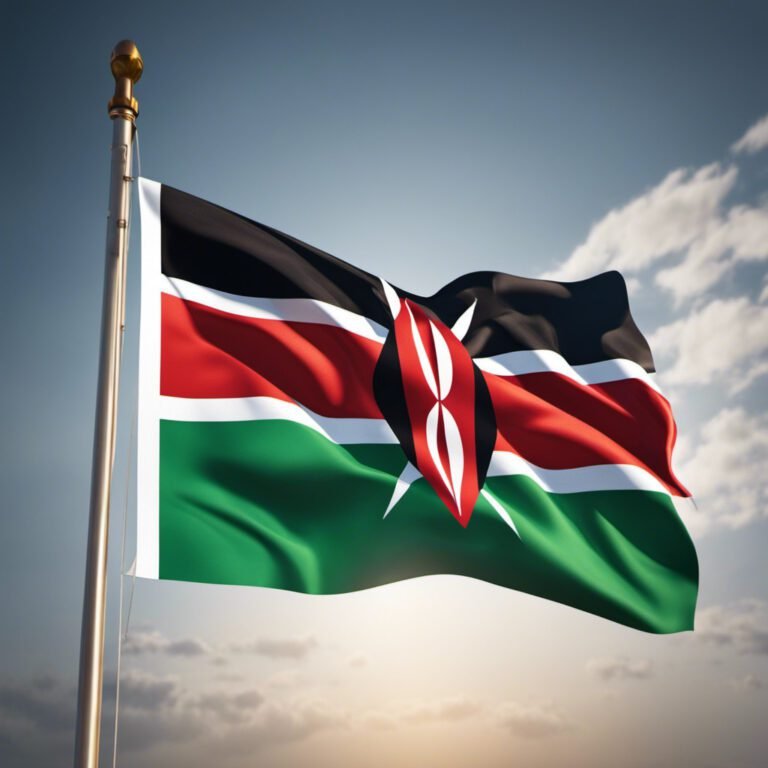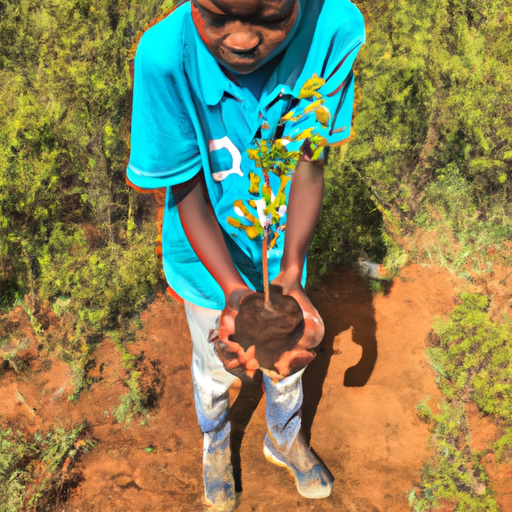What Is The Significance Of The Big Five In Kenyan Wildlife?
Imagine standing in the vast savannah of Kenya, surrounded by the wonders of nature. From majestic lions to towering elephants, the Big Five of Kenyan wildlife have captivated the hearts of adventurers and nature enthusiasts alike. But what exactly is the significance of these iconic animals? In this article, we will explore the importance of the Big Five in Kenyan wildlife, and how they symbolize the harmony and diversity found in this remarkable country. So, let’s embark on a thrilling journey and discover the captivating world of the Big Five in Kenya!
Big Five Animals
The Big Five refers to the five iconic animals that are frequently associated with Kenyan wildlife and are a major draw for tourists visiting the country. These animals include the lion, elephant, Cape buffalo, leopard, and rhinoceros. Each of these animals holds a special place in Kenyan culture, history, and ecological balance. Their presence in the wild not only captivates visitors but also provides important economic, conservation, and cultural benefits for the country.
1. Lion
The lion, often referred to as the “King of the Jungle,” is a majestic creature that embodies strength, power, and pride. It is not only a symbol of national pride but is also deeply embedded in Kenyan folklore and represents courage and bravery. Lions are predominantly found in national parks and game reserves in Kenya, where they play a crucial role in maintaining the ecological balance by regulating prey populations.
2. Elephant
The elephant is the largest land mammal and one of the most intelligent creatures on Earth. They are known for their social structure, complex communication, and remarkable memory. Elephants hold significant cultural and religious importance in many Kenyan communities and are often considered symbols of wisdom, longevity, and prosperity. Furthermore, elephants play a vital role in shaping the landscape by creating watering holes and dispersing seeds, contributing to the overall health of the ecosystem.
3. Cape Buffalo
The Cape buffalo, also known as the African buffalo, is a formidable bovine species that can be found in large herds across Kenya’s grasslands and savannas. These animals are known for their strength and resilience, making them highly sought-after by trophy hunters. However, the Cape buffalo also plays a crucial ecological role by grazing on tall grass, which helps maintain the balance of vegetation and supports the survival of other herbivores in the ecosystem.
4. Leopard
The leopard is a solitary and elusive big cat that is known for its stunning beauty and unmatched hunting prowess. These elusive creatures are often associated with mystery and stealth and are highly revered in African folklore. Leopards are expert climbers and are frequently found in Kenya’s forests and rocky terrain. Their presence in the wild signifies the region’s biodiversity and adds to the allure of the Big Five for wildlife enthusiasts.
5. Rhinoceros
The rhinoceros, both the black and white species, is critically endangered, making its inclusion in the Big Five even more important. Rhinos are known for their prehistoric appearances and unique horn structures that make them instantly recognizable. In Kenyan culture, rhinos are associated with stamina, resilience, and protection. These magnificent creatures are particularly vulnerable to poaching, making their conservation efforts crucial for their survival and for maintaining the ecological balance of the region.
Historical Importance
The historical importance of the Big Five in Kenyan wildlife is deeply rooted in the country’s rich past. These animals have played significant roles in traditional folklore, storytelling, and hunting practices. They have been revered and feared by different tribes, highlighting the cultural importance of these five species. Additionally, during the colonial era, big game hunting became popular among European settlers, and the Big Five became emblematic of their hunting trophies. Although hunting is now illegal, the historical context has contributed to the enduring significance of the Big Five in Kenyan wildlife.
Tourism
The Big Five serve as a major attraction for the tourism industry in Kenya. Thousands of tourists from around the globe flock to Kenya to catch a glimpse of these magnificent creatures in their natural habitats.
1. Economic Impact
The tourism industry generated by the Big Five has a significant economic impact on Kenya. Visitors contribute to the local economy through expenditures on accommodations, transportation, park fees, and safari tours. The revenue generated from tourism provides substantial income for the government and local communities, leading to improved infrastructure, healthcare, and education. The Big Five animals act as an economic engine, supporting businesses and providing employment opportunities.
2. Job Creation
The presence of the Big Five creates a multitude of job opportunities in the tourism sector. From safari guides to lodge staff and conservation workers, the tourism industry relies heavily on the protection and conservation of these animals. The employment opportunities provided by the Big Five contribute to poverty alleviation and social development, particularly in rural communities where wildlife reserves are located.
3. Wildlife Conservation
The popularity of the Big Five has led to increased conservation efforts in Kenya. Wildlife reserves and national parks are essential for protecting these iconic animals and their habitats. Revenue generated from tourism is often reinvested in conservation projects, anti-poaching initiatives, and community-based conservation programs. By conserving the Big Five, Kenya ensures the preservation of biodiversity, strengthens ecosystems, and promotes sustainable development for future generations.
Conservation Efforts
Kenya has implemented various measures to conserve and protect the Big Five and their habitats.
1. Protected Areas
The establishment of protected areas such as national parks, game reserves, and wildlife conservancies has played a vital role in preserving the Big Five. These designated areas provide a safe haven for the animals, ensuring their survival and minimizing human-wildlife conflicts. Protected areas also serve as educational tools, allowing visitors to learn about wildlife conservation and the importance of preserving these iconic species.
2. Anti-poaching Measures
Poaching poses a significant threat to the Big Five, particularly the rhinoceros. Kenya has implemented stringent anti-poaching measures, such as increased patrols, the use of advanced technology like drones, and intelligence-led operations. Additionally, collaborations with international organizations and law enforcement agencies have helped combat the illegal wildlife trade and reduce poaching incidents.
3. Community Involvement
Engaging local communities in conservation efforts is crucial for the long-term success of protecting the Big Five. Community-based conservation initiatives empower local people, provide alternative livelihoods, and instill a sense of ownership and responsibility for preserving wildlife and their habitats. By involving local communities, Kenya ensures the sustainability of conservation efforts and promotes harmony between humans and wildlife.
Ecological Balance
The Big Five play an integral role in maintaining the ecological balance of Kenya’s diverse ecosystems. Each of these animals has a unique niche and contributes to the overall health and functioning of the environment. The lion, for example, helps control herbivore populations, preventing overgrazing and maintaining vegetation balance. Elephants, through their feeding and migratory habits, shape landscapes and create opportunities for other species. The Cape buffalo and its grazing activities influence plant diversity, while leopards are essential for controlling prey populations. Finally, rhinos contribute to seed dispersal and habitat modification. The presence of the Big Five ensures a harmonious and balanced ecosystem, promoting biodiversity and ecological resilience.
Symbolic Representation
The Big Five holds symbolic value for both Kenyans and visitors from around the world.
1. National Pride
The Big Five symbolizes Kenya’s natural heritage and generates a sense of national pride. These iconic animals are often seen as ambassadors for the country’s wildlife and conservation efforts. Kenyans take pride in their rich natural resources and cultural heritage, which are deeply intertwined with the Big Five. These animals have become an integral part of the national identity and are celebrated in various cultural festivals, artwork, and literature.
2. Cultural Significance
In addition to national pride, the Big Five holds cultural significance for many communities in Kenya. These animals feature prominently in myths, legends, and spiritual beliefs. Traditional ceremonies and rituals often incorporate the symbolism and qualities associated with the Big Five. The conservation of these animals is not only a matter of ecological importance but also a way of preserving cultural heritage and ancestral knowledge for future generations.
Threats to Big Five
Despite conservation efforts, the Big Five still face several threats to their survival.
1. Poaching
Poaching remains a significant threat, particularly for the rhinoceros due to the high demand for its horn. Rhino horn is erroneously believed to have medicinal properties and is illegally traded on the black market. Lions and elephants are also targeted for their body parts and trophies. Addressing poaching requires robust law enforcement, international cooperation, and raising awareness to combat the illegal wildlife trade.
2. Habitat Loss
Habitat loss due to human activities, such as agriculture, infrastructure development, and urbanization, poses a significant threat to the Big Five. As human populations expand, the demand for land increases, encroaching upon wildlife habitats and fragmenting ecosystems. Conservation efforts must include measures to mitigate habitat loss, such as sustainable land-use practices, protected areas, and wildlife corridors.
3. Human-Wildlife Conflict
The coexistence of humans and wildlife can sometimes lead to conflicts, particularly when there is competition for resources or perceived threats to livelihoods. Encounters between humans and the Big Five can result in crop damage, livestock predation, and even human fatalities. Encouraging community participation, implementing effective mitigation strategies, and promoting sustainable land and resource management can help minimize human-wildlife conflicts and ensure the long-term survival of the Big Five.
Conservation Success Stories
Despite the challenges, Kenya has witnessed notable success stories in the conservation of the Big Five.
1. Tsavo Conservation Area
The Tsavo Conservation Area is the largest protected area in Kenya and is home to a significant population of elephants and lions. Through enhanced anti-poaching efforts, community-based conservation initiatives, and collaboration between various stakeholders, Tsavo has seen a remarkable increase in wildlife numbers and a decline in poaching incidents. This success story serves as an inspiration for other conservation areas and demonstrates the effectiveness of comprehensive conservation approaches.
2. Ol Pejeta Conservancy
Ol Pejeta Conservancy, located in central Kenya, is recognized for its pioneering conservation efforts, particularly in protecting rhinoceros populations. The conservancy has implemented stringent security measures, such as the use of armed rangers and advanced surveillance technology, to counter poaching activities. Moreover, Ol Pejeta actively engages with local communities, providing educational programs and supporting alternative livelihood initiatives, thereby contributing to the coexistence of humans and wildlife.
In conclusion, the Big Five animals hold immense significance in Kenyan wildlife. Their cultural, economic, and conservation value cannot be overstated. By safeguarding these iconic creatures, Kenya not only preserves its natural heritage but also ensures the sustainability of its tourism industry, the livelihoods of local communities, and the ecological balance of its diverse ecosystems. The challenges they face, including poaching, habitat loss, and human-wildlife conflict, require continuous efforts and collaboration between government authorities, conservation organizations, local communities, and international partners. The conservation success stories in Kenya serve as beacons of hope and remind us of the importance of preserving the Big Five for future generations.







